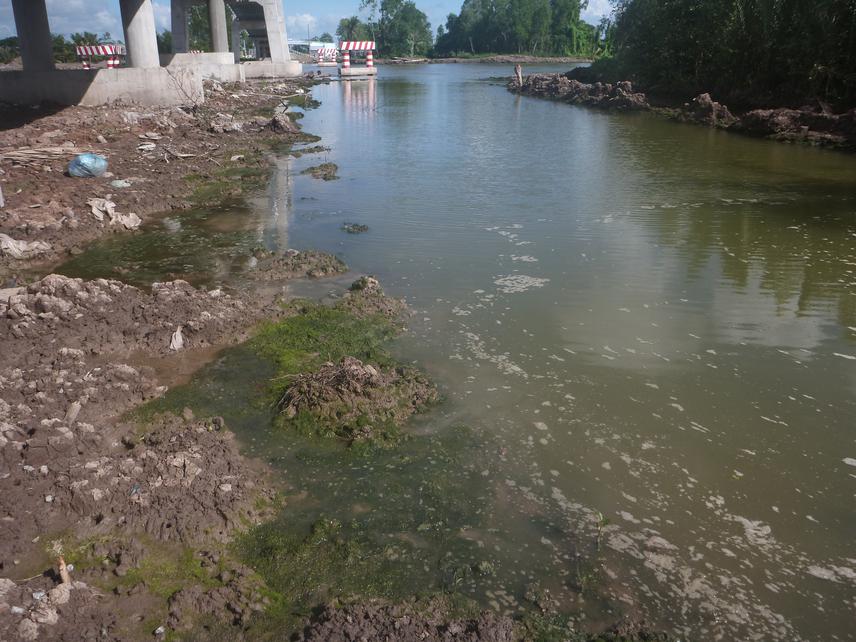Tran Thi Lan Anh
There is an increasing demand to discover a native Ulva species for bioremendiation of excess nutrients caused by discharged effluents from shrimp farms in Southern Vietnam since it negatively impacts the downstream biological communities in these ecosystems, especially in Ca Mau and Kien Giang provices that are biodiversity hotspots.
Hence, my primary objective is to screen diversity of Ulva genus in these provinces and investigate their ecology and natural distribution pattern. This data will assist future investigation on which Ulva species/strain is the most suitable for bioremediation purposes in the Southwest of Vietnam. In addition, it is the original data on diversity and distribution of Ulva species in the region and will assist further monitoring and management of coastal ecosystem’s health since the bloom of Ulva is an indication of eutrophication in coastal seas.

An Ulva species occurs in a channel in Ca Mau province.
As shrimp aquaculture sector in the Southern Vietnam quickly develops, it discharges a huge amount of organic waste into the environments. This excess nutrient can easily diffuse to the natural ecosystems through water flows or penetration through soil layers and can negatively impact the downstream biological communities in these ecosystems. This phenomenon seriously damage ecosystem biodiversity in Ca Mau and Kien Giang provinces, each have one Biosphere Reserves, providing habitats for many endemic yet threaten species .
To maintain the habitats and conserve biodiversity here, excess nutrients need to be minimized or removed from the ecosystem. The incorporation of the seaweeds Ulva (Chlorophyta, Ulvaceae) in Integrated Multi-trophic Aquaculture is highly efficient to absorb excess nutrients from aquaculture, subsequently reducing the environmental impacts of effluents and makes the activity more environmentally sustainable. However, introducing a new Ulva spp. to Vietnam to achieve the goal can pose threats related to introduce species to biodiversity of the regions. Therefore, an Ulva species for bioremendiation purposes in Vietnam must be an indigenous species and possess a high nutrient uptake rate.
Thus, in my project, I will investigate the local diversity of Ulva spp. in Southwest Vietnam using the combination of morphological and genetic approaches to assist further selection of the Ulva species for bioremediation purposes. Ecology and natural distribution of Ulva spp. along the coasts of these provinces will also be assessed. Since the distribution of Ulva spp. can be used as an indication of coastal ecosystem’s health, insights in the distribution pattern of the species will help further monitoring and management of the health of coastal ecosystem under the anthropogenic and climate change effects.